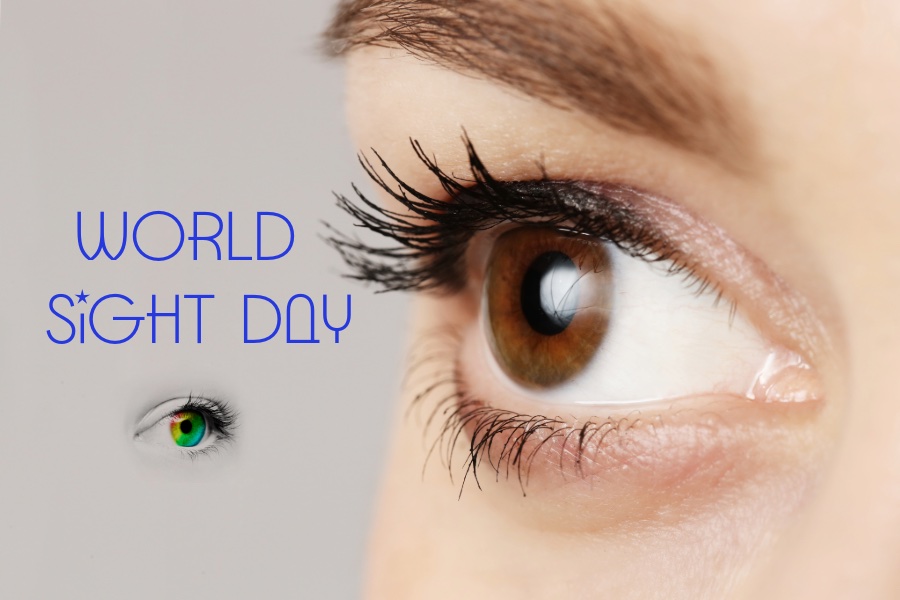World Sight Day, observed on the 10th of October, is an international day of awareness coordinated by the International Agency for the Prevention of Blindness (IAPB).
The day is dedicated to focusing global attention on blindness and vision impairment. It aims to raise public awareness, influence governments and health ministers, and encourage the inclusion of vision care in national health agendas.
The Importance of World Sight Day
Good vision is essential for everyday activities and overall quality of life. In the workplace, poor vision can lead to decreased productivity, increased error rates, and higher risks of accidents. By supporting World Sight Day, organisations can help promote eye health, ensure a safer work environment, and enhance the overall wellbeing of their employees.
How Organisations Can Get Involved
- Organise Vision Screenings: Host on-site vision screening events to help employees identify potential vision problems early. Partner with local optometrists or vision care providers to facilitate these screenings.
- Promote Eye Health Education: Distribute educational materials about the importance of eye health, common vision problems, and preventive measures. Consider holding seminars or workshops led by eye health professionals.
- Implement Ergonomic Workstations: Ensure that workstations are designed to reduce eye strain. This includes providing adjustable chairs, proper lighting, and monitors positioned at eye level.
- Encourage Regular Eye Exams: Promote the importance of regular eye exams and provide information on how employees can schedule them. Some companies may consider offering vision insurance as part of their employee benefits package.
- Support World Sight Day Campaigns: Participate in global and local World Sight Day events. This could include fundraising activities, awareness campaigns, or social media promotions using the hashtag #WorldSightDay.
Common Sight Health Issues in the Workplace
Employees may experience various vision-related issues, particularly those who spend significant time on computers or in environments with poor lighting. Some common sight health problems include:
- Digital Eye Strain: Caused by prolonged use of digital devices, symptoms include headaches, blurred vision, and dry eyes. Regular breaks and proper screen positioning can help mitigate this.
- Refractive Errors: Conditions such as myopia (nearsightedness), hyperopia (farsightedness), and astigmatism affect how the eye focuses light. Regular eye exams and corrective lenses can address these issues.
- Cataracts: A condition where the lens of the eye becomes cloudy, leading to blurred vision. Although more common in older adults, cataracts can affect people of all ages.
- Glaucoma: A group of eye conditions that damage the optic nerve, often associated with increased pressure in the eye. Early detection through regular eye exams is crucial.
- Age-related Macular Degeneration (AMD): A condition affecting the central part of the retina, leading to loss of central vision. It is a leading cause of vision loss in older adults.
How Employers Can Improve Employee Sight Health
- Optimise Lighting: Ensure that workplaces are well-lit to reduce eye strain. Use natural light where possible and provide adjustable lighting options for individual workstations.
- Encourage Breaks: Implement the 20-20-20 rule: every 20 minutes, employees should take a 20-second break to look at something 20 feet away. This helps reduce digital eye strain.
- Provide Screen Protection: Offer anti-glare screens for monitors and ensure that computer screens are positioned at the correct distance and height.
- Promote a Healthy Lifestyle: Encourage employees to maintain a diet rich in eye-healthy nutrients such as omega-3 fatty acids, lutein, and vitamins C and E. Regular exercise and not smoking are also beneficial for eye health.
- Offer Vision Insurance: Consider including vision care in your employee benefits package to make it easier for employees to access regular eye exams and corrective eyewear.
Further Reading and Resources
- RNIB – Royal National Institute of Blind People: UK-based charity offering support and information on vision impairment.
- International Agency for the Prevention of Blindness (IAPB): Global organisation dedicated to the prevention of blindness and promotion of eye health.
- Vision Matters: Information and resources for promoting eye health.
- College of Optometrists: UK-based professional body for optometrists providing resources and information on eye health.
WORKPLACE WELLBEING PROFESSIONAL AND EYE HEALTH
To read news pieces and exclusive feature articles written by HR and wellbeing professionals, follow the links below (with much more to be found under ‘Eye Health’ in the Topic Index):
- 73% recognise sight as essential to health yet many lack the nutritional know how
- Are you blinking too much at your desk?
- Harpreet Kular: Eyes matter – a guide to maintaining eye health in the workplace
- Giles Edmunds: Earnest eye care – a break through for employee productivity
Joanne is the editor for Workplace Wellbeing Professional and has a keen interest in promoting the safety and wellbeing of the global workforce. After earning a bachelor's degree in English literature and media studies, she taught English in China and Vietnam for two years. Before joining Work Well Pro, Joanne worked as a marketing coordinator for luxury property, where her responsibilities included blog writing, photography, and video creation.



